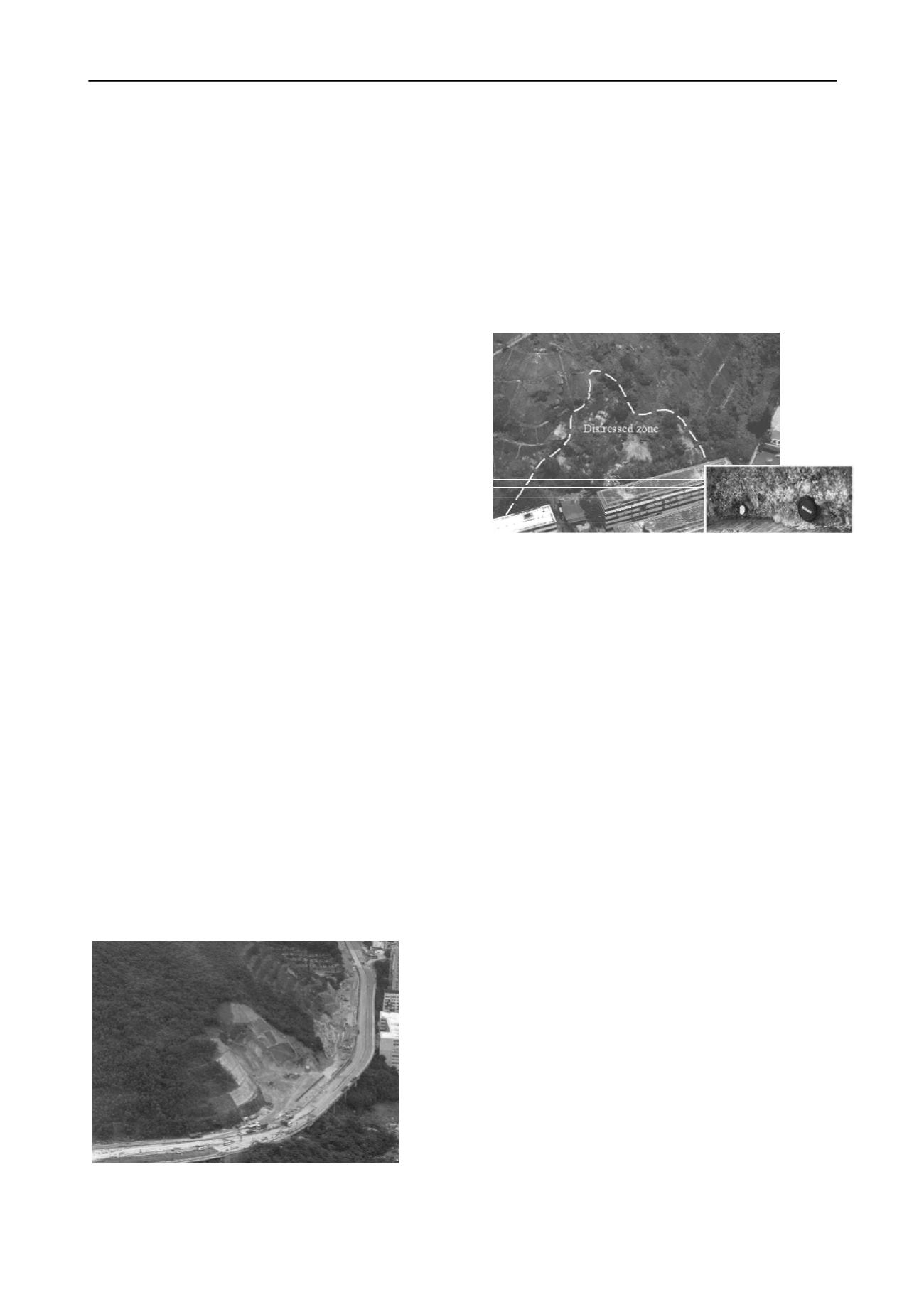
2214
Proceedings of the 18
th
International Conference on Soil Mechanics and Geotechnical Engineering, Paris 2013
Hong Kong. Following the Kwun Lung Lau landslide of
23 July 1994 (Figure 1), which killed five people and
seriously injured three others (Morgenstern & GEO 2000), the
GEO introduced a number of new enhancement initiatives
including a systematic LI programme. The scope of landslide
investigations includes examination of all reported landslide
incidents and in-depth studies of selected landslides to
identify the causes of failure and necessary follow-up actions.
The objectives of the systematic LI are to identify those
slopes in need of early attention, and undertake forensic
investigation of landslides that involve coroner inquests, legal
actions or financial disputes. Through landslide
investigations, the performance of the Government’s slope
safety system will be reviewed and areas for improvement
identified. Landslide investigations help advance the
understanding of causes and mechanisms of landslides and
enhance slope engineering practices and the reliability of
landslide preventive or remedial works.
The annual expenditure of the LI programme is about
US$3 million. Based on observations from LI, new guidelines
are promulgated to improve the prevailing geotechnical
practice. Some salient LI observations and improvements for
soil cut slopes, rock slopes, retaining walls, fill slopes and
natural hillside are described below.
4. SOIL CUT SLOPES
Soil cut slopes formed or treated prior to 1990s typically
involved trimming back to a less steep gradient without the
provision of reinforcement or structural support. They are
prone to degradation and vulnerable to the presence of local
weaknesses in the groundmass. Large scale landslides
involving such unsupported cut slopes are not uncommon.
Notable examples are the Ching Cheung Road landslide in
1997 (Figure 2) and Shek Kip Mei failure in 1999 (Figure 3).
The 1997 Ching Cheung Road landslide involved a failure
volume of over 2,000 m
3
, resulting in the trapping of a motor
car and temporary closure of a major route connecting east
and west Kowloon for two months. The Shek Kip Mei failure
involved a distressed volume of 6,000 m
3
, resulting in
permanent evacuation of three housing blocks. Findings from
investigation of such failures highlight the vulnerability of
unsupported cut slopes to adverse geological features and
hydrogeological conditions, which may be difficult to detect.
A pragmatic approach of adopting more robust design
solutions, such as the use of soil nailing was called for. A soil
nailed slope tends to behave as an integral mass and is less
sensitive to local adverse conditions as compared with an
unsupported cut. The use of soil nailing has been widely
adopted for upgrading of slopes in Hong Kong since mid
1990s.
So far, there are 40 failures among some 7000 slopes
installed with soil nails. None of these are major landslides
(volume ≥ 50 m
3
). This indicates that the use of soil nails is
effective in averting large scale failure. These minor failures
were mostly involved surface erosion or minor local
detachment in the groundmass between soil nail heads.
Lessons learnt from investigation of soil-nailed slope failures
have led to enhanced understanding of the behaviour of soil-
nailed slopes (e.g. the importance of soil-nail head), improved
detailing of surface drainage provisions (e.g. provision of
intersecting drains for long sloping grounds), and enhanced
surface protection details. Advances have also been made in
the design of soil nails, as promulgated in the Geoguide 7
(GEO 2008).
Figure 3: Laterally-persistent discontinuity infilled with slickensided
kaolin and manganese oxide deposits at the 1999 Shek Kip Mei failure
5. ROCK SLOPES
Major failures (volume ≥ 50 m
3
) involving rock slopes are not
very common. Most of the landslides were rain-induced and
structurally-controlled, involving build-up of cleft water
pressure in rock joints. Other contributory factors such as
presence of soft infill along discontinuities, slope
deterioration, root wedging effect, etc were also noted. These
failures highlight the importance of identifying adversely-
orientated jointing system which could have implication to the
stability of slopes in the design. With respect to minor rock
slope failures such as rockfalls, the primary causes were due
to presence of local adverse groundwater regimes and/or loose
or unstable blocks. Many of the rockfalls were initiated by
tree-root actions. Given the scale of the failure and the
consequence of the failure in the urbanized setting in Hong
Kong, rockfalls are difficult to guard against in design. A
pragmatic approach is to provide suitable protective and
mitigation measures such as rock mesh netting, rock fall fence
and buffer zone where practicable. LI findings are
incorporated in the relevant manuals and guidelines to
enhance the rock slope engineering practice (GEO 2009).
6. RETAINING WALLS
A few major landslides involving retaining wall failures had
occurred in the past, the most notable one being the 1994
Kwun Lung Lau landslide. The landslide involved the a
brittle collapse of a 100-year old masonry wall (Morgenstern
& GEO 2000) releasing 1000 m
3
of debris causing 5 fatalities.
No tell-tale sign was reported prior to the failure. The failure
was triggered by saturation of the soil behind the masonry
wall as a result of leakage from nearby defective buried
water-carrying services. The incident highlighted the
importance of regular inspection and maintenance of water-
carrying services affecting slopes. Following the incident, a
guidance document entitled “Code of Practice on Inspection
and Maintenance of Water Carrying Services Affecting
Slopes” was issued by the Government, setting out the
recommended good practice for regular inspection and
maintenance of water-carrying services affecting slopes.
Figure 2: The Ching Cheung Road Landslide in 1997


